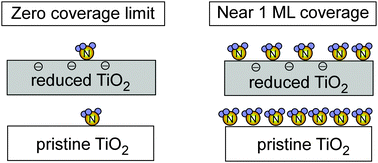The effect of oxygen vacancies on the binding interactions of NH3 with rutile TiO2(110)-1 × 1
Abstract
A series of

* Corresponding authors
a
Department of Energy Systems Research and Department of Chemistry, Ajou University, Suwon 443-749, South Korea
E-mail:
yukwonkim@ajou.ac.kr
Fax: +82-31-219-2969
Tel: +82-31-219-2896
b Chemical and Materials Sciences Division, Fundamental and Computational Sciences Directorate, Pacific Northwest National Laboratory, PO Box 999, Mail Stop K8-88, Richland, Washington 99352, USA
A series of

 Please wait while we load your content...
Something went wrong. Try again?
Please wait while we load your content...
Something went wrong. Try again?
B. Kim, Z. Li, B. D. Kay, Z. Dohnálek and Y. K. Kim, Phys. Chem. Chem. Phys., 2012, 14, 15060 DOI: 10.1039/C2CP42754K
To request permission to reproduce material from this article, please go to the Copyright Clearance Center request page.
If you are an author contributing to an RSC publication, you do not need to request permission provided correct acknowledgement is given.
If you are the author of this article, you do not need to request permission to reproduce figures and diagrams provided correct acknowledgement is given. If you want to reproduce the whole article in a third-party publication (excluding your thesis/dissertation for which permission is not required) please go to the Copyright Clearance Center request page.
Read more about how to correctly acknowledge RSC content.
 Fetching data from CrossRef.
Fetching data from CrossRef.
This may take some time to load.
Loading related content
